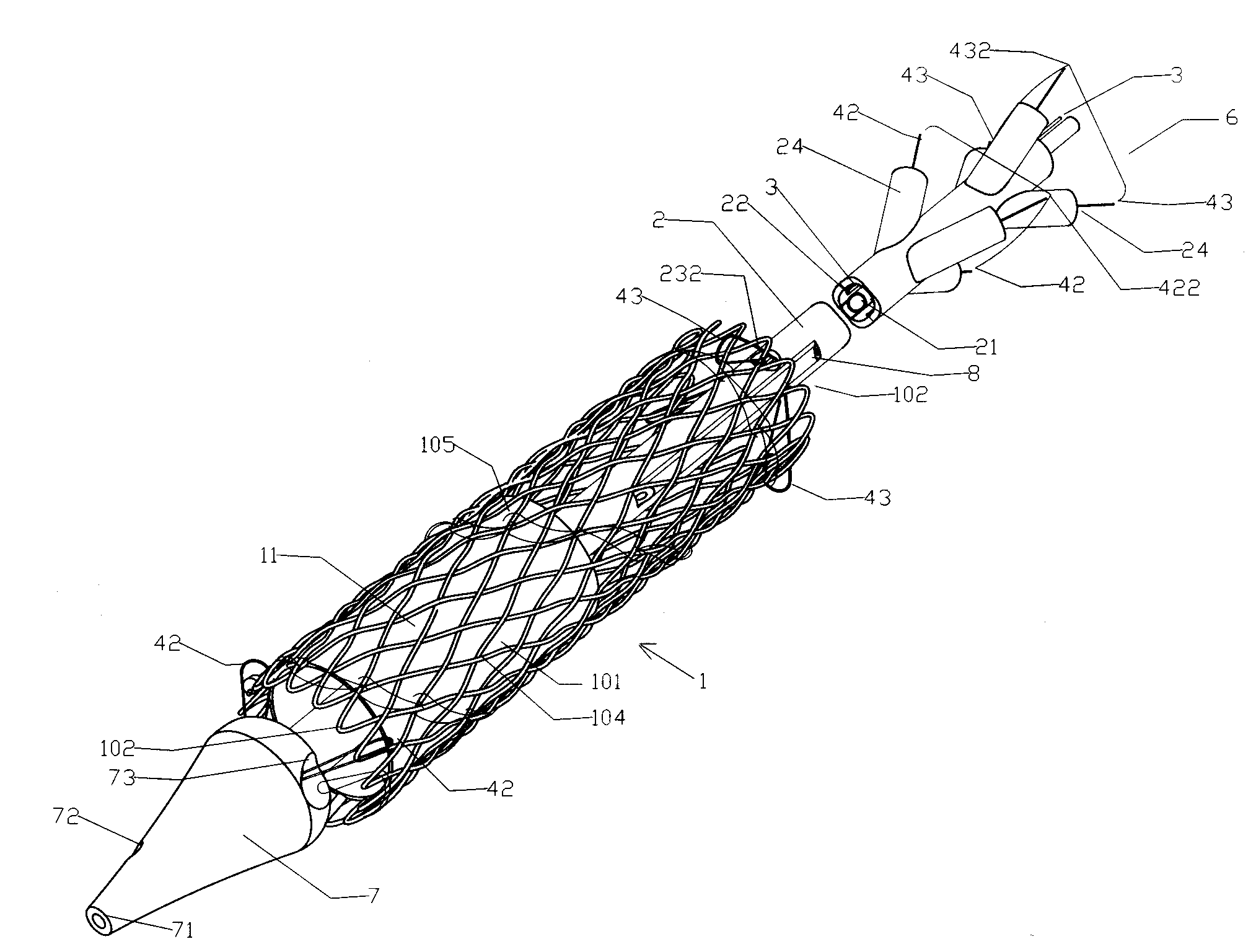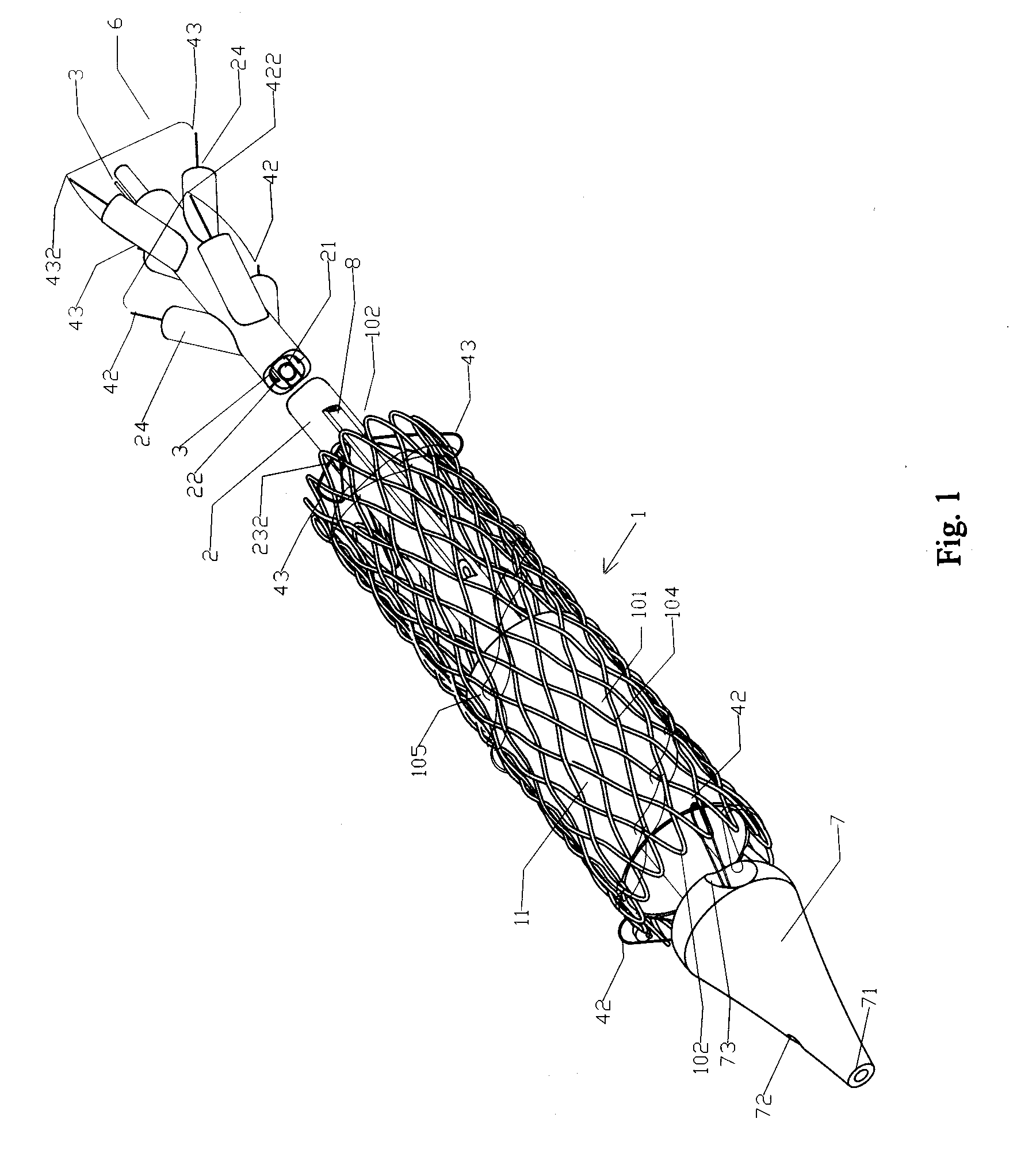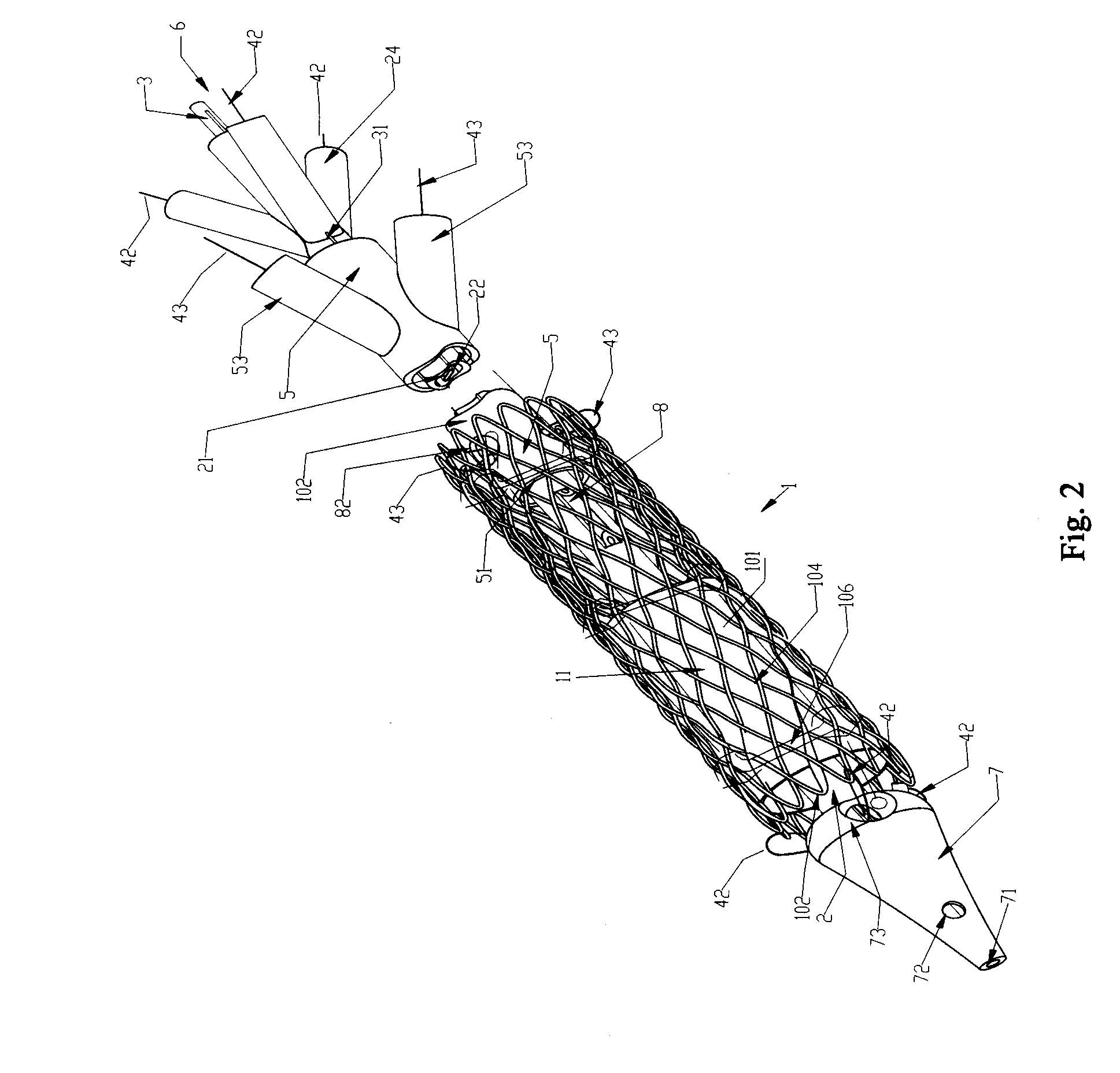Axial Pullwire Tension Mechanism for Self-Expanding Stent
a tension mechanism and self-expanding technology, applied in the field of tension mechanism, can solve the problems of high cost, high risk, and high cost of thoracotomy, and achieve the effects of reducing the risk of extra surgery, and reducing the risk of surgery
- Summary
- Abstract
- Description
- Claims
- Application Information
AI Technical Summary
Benefits of technology
Problems solved by technology
Method used
Image
Examples
Embodiment Construction
[0038]With reference to FIG. 1˜FIG. 9, the present invention, titled axial pull wire tension mechanism for self-expanding stent, is applied in the implantation of the self-expanding stent into cardiac blood vessels where it tensions the stent in collaboration with the delivery system and other stent tensioning mechanisms, of which the latter specifically refers to the flexible coupling ring tensioning mechanism and the take-up tensioning mechanism, both owned by the applicant of the present invention. (Refer to the other two patents of the applicant: “flexible coupling ring tensioning mechanism for self-expanding stent” and “take-up tensioning mechanism for self-expanding stent”)
[0039]The self-expanding stent designated as 1 in the present invention includes self-expanding stents with membranes and self-expanding stent valves, of which the former is partially or entirely covered by membranes 11 on the walls, whereas the latter, aside from being partially or entirely covered with mem...
PUM
 Login to View More
Login to View More Abstract
Description
Claims
Application Information
 Login to View More
Login to View More - R&D
- Intellectual Property
- Life Sciences
- Materials
- Tech Scout
- Unparalleled Data Quality
- Higher Quality Content
- 60% Fewer Hallucinations
Browse by: Latest US Patents, China's latest patents, Technical Efficacy Thesaurus, Application Domain, Technology Topic, Popular Technical Reports.
© 2025 PatSnap. All rights reserved.Legal|Privacy policy|Modern Slavery Act Transparency Statement|Sitemap|About US| Contact US: help@patsnap.com



